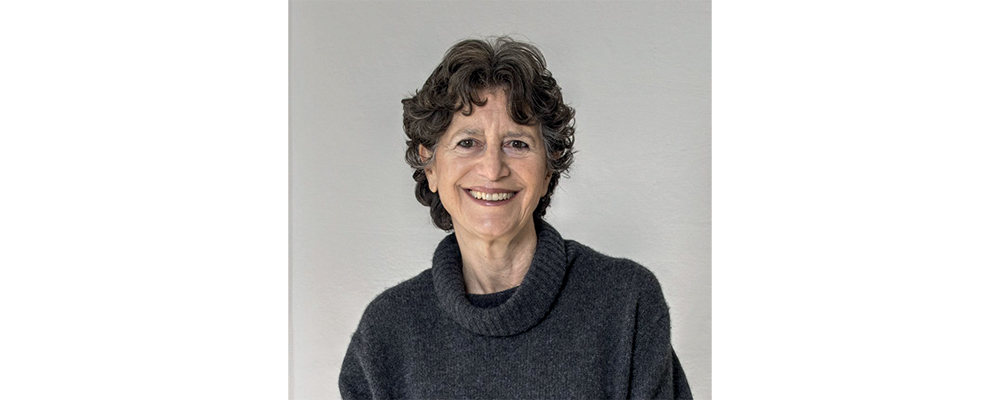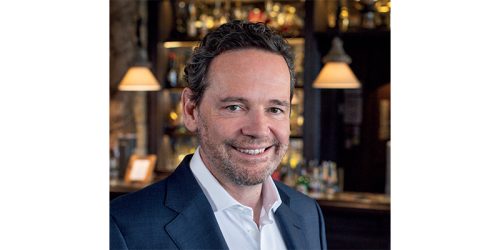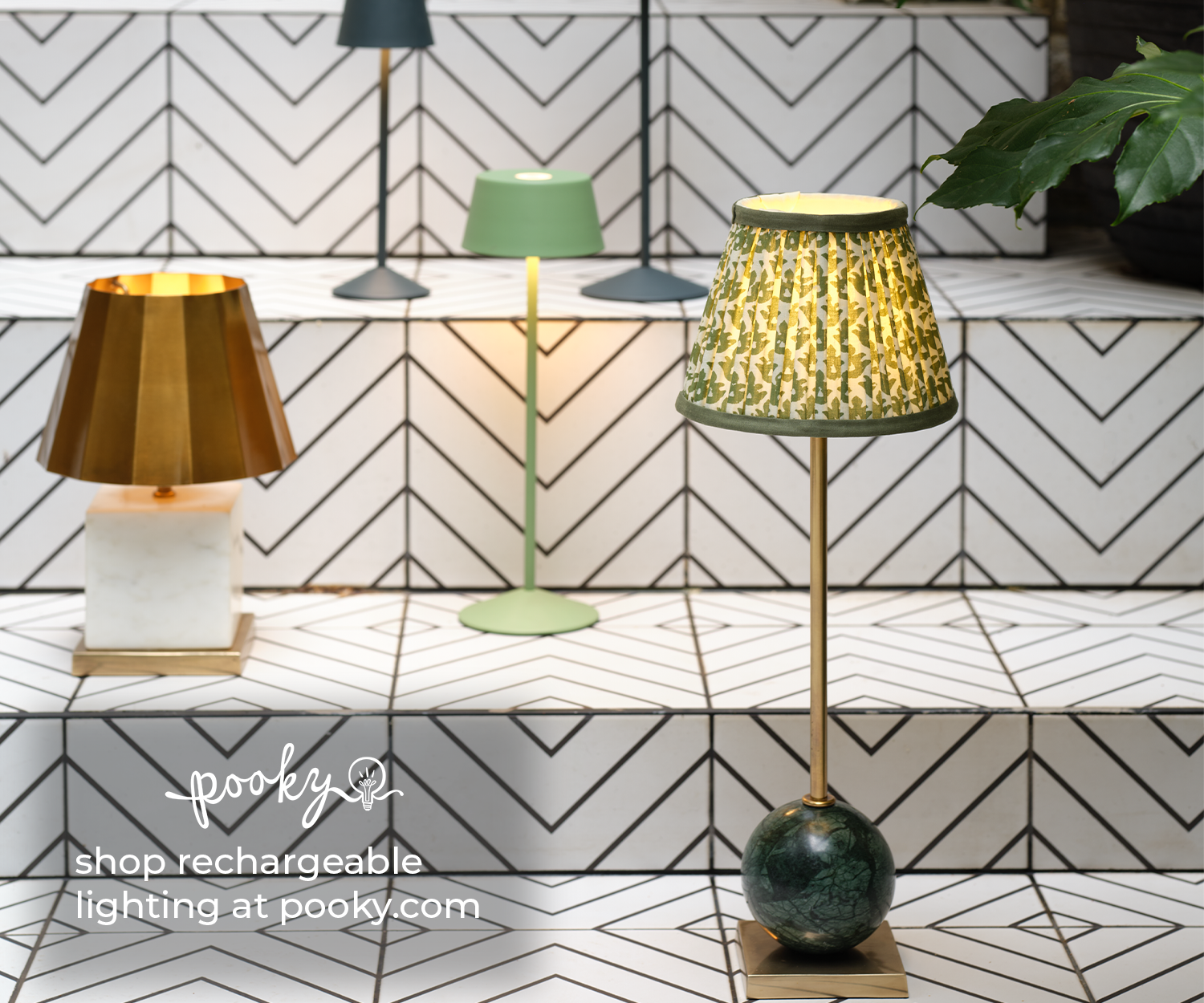Olga Polizzi, Deputy Chairman and Director of Design at Rocco Forte Hotels
As a new chapter unfolds at The Charles Hotel in Munich, Olga Polizzi, speaks candidly about the nuances of revisiting an existing project, the value of creative partnerships, and the subtle shifts in guest expectations.
 Recognised for her ability to blend classical sensibility with contemporary relevance, Olga Polizzi creates interiors that are luxurious and imbued with that all-important sense of place. With a background steeped in both heritage and innovation, she brings a uniquely personal aesthetic to each project, ensuring every property feels distinct, contextual, and quietly bold.
Recognised for her ability to blend classical sensibility with contemporary relevance, Olga Polizzi creates interiors that are luxurious and imbued with that all-important sense of place. With a background steeped in both heritage and innovation, she brings a uniquely personal aesthetic to each project, ensuring every property feels distinct, contextual, and quietly bold.
With an eye for texture, proportion, and narrative, Polizzi collaborated with trusted design partners Paolo Moschino and Philip Vergeylen to reimagine The Charles Hotel’s public spaces and suites. The result is a series of spaces that offer her customary residential warmth, layered detailing, and an atmosphere that resonates with the soul of the city.
The Charles Hotel opened its doors in 2007. How does it feel coming back to redesign a hotel you’ve already worked on?
I don’t particularly enjoy redesigning. Going back to redesign a hotel we’ve already worked on is always a bit tricky. We put a lot of thought into every detail the first time around, so it’s not necessarily something we look forward to redoing. That said, it does give us the chance to build on what’s already there, with a clearer idea of what works and what could be improved.
Being purpose built, The Charles is still a relatively new building. As a designer, what are the pros and cons of working with a new property versus one with history?
Christoph Sattler, who designed The Charles, is one of the best-known architects in Munich, and he was a pleasure to work with.
It’s always quite different working on a new building versus one with history – but both are fun and have their appeal. With an older building, the architecture often guides you, and that can be very helpful. But with something purpose built, there’s more freedom to shape the spaces from scratch, which is equally interesting.
When you’re working across so many different hotels, it’s good to have that variety. I enjoy mixing things – commissioning work from contemporary artists and artisans but also wandering through antiques fairs and finding pieces that feel right for each place.
This redesign saw you collaborate with Paolo Moschino and Philip Vergeylen for the public spaces. How do you typically choose external design studios to work with on Rocco Forte projects?
I work with very few outside designers, though I’d like to find more we can collaborate well with. I have to really admire the work they’ve done elsewhere, and just as importantly, we need to work well together. It has to be a good exchange, with both sides bringing ideas and being open to each other’s thinking.
I do enjoy working with outside designers – I always learn something new. Ideally, we learn from each other. I wouldn’t work with anyone whose style is completely different to mine, but it’s good to have fresh ideas and a different point of view.
All our hotels have a strong sense of place, and that must come through in the design. Anyone I collaborate with needs to understand and respect that. It is central to how we approach every project.
As you say, much of the ground floor at The Charles has been redesigned by Paolo Moschino and Philip Vergeylen, who we’ve worked with across several Rocco Forte Hotels, including Villa Igiea in Palermo, Brown’s in London, and Verdura Resort in Sicily. They really understand our way of thinking – they’re collaborative, open to discussion, and happy to adapt where needed.
Tell me more about their work at The Charles
One of the most notable areas is the new restaurant, Florio. The space has always been lovely, with tall ceilings and lots of natural light, which allowed us to be quite playful with texture and pattern. Now, with layered artwork and refined materials, it has really come into its own and follows a concept developed for a few of our restaurants. It suits The Charles perfectly with its proximity to the park and leafy space outside, and we thought of the park when we designed it.
The floral mural, the botanical prints, and the chandelier with its cascade of delicate leaves – were details carefully layered to evoke a sense of a garden indoors. The flower paintings and prints were collected gradually over time, as was the floral fabric used on the chairs and banquettes. It all comes together to create the world of Florio. During the day, it feels fresh and airy, and by night, the atmosphere softens into something very romantic.
The Circle Bar that leads from the newly designed hotel lobby is wonderfully opulent. Could you tell me a little about the design concept behind it?
The Circle Bar, which is more masculine in feel – and serves an excellent champagne menu – was originally conceived with this unusual round shape, which immediately gave it a distinct character. The bookcases lining the walls added warmth and a slightly club-like feel, which we wanted to keep.
It hasn’t changed drastically, but it does feel more dramatic, and at the same time cosy and intimate. We used deeper tones and richer textures to give it that sense of opulence but also kept it comfortable and welcoming. It’s important that a bar feels like somewhere people can relax. It is still elegant, but now there is a real sense of atmosphere, a place where guests want to linger, whether for a quiet drink or something celebratory.
By contrast, The bar inside the restaurant is larger, more vibrant, and has a younger, more energetic atmosphere.
The newly designed rooms and suites have a distinct residential feel, especially the stunning Monforte Royal Suite. Was that a conscious decision, or do you think that home-like warmth is simply a reflection of your personal style?
The Monforte Suite – the hotel’s Presidential Suite – is probably the best suite we now offer across the entire Rocco Forte portfolio and was re-designed by our in-house team. I’ve always approached our hotels as I would my own home. If I don’t like a fabric, a painting, or a piece of furniture for myself, I wouldn’t dream of putting it in one of our rooms. That’s why I rarely work with interior designers who only design hotels. Too often, you end up with something formulaic or impersonal. I much prefer designers who come from a residential background, especially those who have worked on glamorous homes.
For me, the final touch is what brings a room to life. I’m constantly on the lookout for unique pieces – pottery, china, artwork, antique furniture, often one-offs, that can’t be reproduced. Many of the pieces in our suites are just that: entirely unique, which helps make the space feel warm and individual.
What guestroom details – whether simple or not-so-simple – do you think are often overlooked when designing a hotel room?
It’s extraordinary how often the basics are missed. You might walk into a beautifully designed, expensive room and still find there’s no room on the vanity for a wash bag, the lighting is too complicated, or there’s no comfortable chair positioned where you can actually watch the television.
We always try to get the essentials right – comfort, practicality, lighting and flow, though there are always learnings from every project!
In the 18 years since The Charles first opened, how have you seen guest expectations evolve? What do you think today’s traveller is looking for that perhaps wasn’t such a priority back then?
Guest expectations have definitely changed over the past 18 years. People are much more design-aware now. Generally, everyone is more into design. They pay more attention to their own homes, so naturally, they expect more from a hotel room too.
Luckily, The Charles had a strong foundation to begin with. Christoph Sattler’s architecture was solid, no corners were cut, and the bathrooms, with walk-in showers, bathtubs, and bidets, still feel brand new. The rooms are a very generous size, but after nearly two decades, it was time for a refresh.
One of the key changes is the shift to technology. When the hotel first opened, guests didn’t travel with so many devices. Now, it’s smartphones, tablets, laptops, so we have added more charging points and better lighting. Espresso machines are also now a standard expectation, so we have updated the experience to reflect how people live and travel today.
The Charles features a wide array of artworks in various styles and mediums. What role does art play in your design process – and how do you go about sourcing pieces that feel right for the space?
The art in our hotels is very important. It’s often what brings a space its personality and sense of place. I try to buy local artists wherever possible; it roots the hotel in its surroundings immediately.
At The Charles, we bought a significant collection of works by Franz von Lenbach, the celebrated 19th-century portrait painter who has a museum just a few minutes from the hotel. His works are dotted around the property, some in the lobby, others in the main bar, and help to ground the hotel in Munich’s cultural landscape.
And finally, what are you currently working on – and what can Rocco Forte fans look forward to next?
We’re opening a new hotel in Milan this November, The Carlton, which is very exciting. It’s a city I love – vibrant, elegant – and this hotel is right in the centre, within walking distance of the best shops, restaurants, and monuments. We have worked on the design for many years, with Paolo and Philip.
Beyond that, we’re working on new properties in Puglia, Naples, and Sicily, and carrying out major refurbishment projects in Rome, London, Florence, and Sicily. There are also a few other hotels in the pipeline, so my department is certainly not short of work at the moment..!













